Hiking is a popular outdoor activity enjoyed by millions of people around the world. However, for those with plantar fasciitis, it can be a challenging experience. Plantar fasciitis is a common foot condition that causes pain and discomfort in the heel and arch of the foot. As someone who enjoys hiking, I have struggled with this condition and have found ways to manage it while still enjoying the great outdoors.
If you are experiencing pain while hiking, it is important to stop and rest. Continuing to hike with plantar fasciitis can worsen the condition and lead to more severe pain. However, with proper care and treatment, it is possible to continue hiking without causing further damage. In this article, I will share tips for preventing plantar fasciitis, how to hike with plantar fasciitis, and exercises to help strengthen your plantar fascia and prevent pain.

Key Takeaways
- If you are experiencing pain while hiking, it is important to stop and rest.
- There are exercises that you can do to help strengthen your plantar fascia and prevent pain.
- Wearing compression socks while hiking may be helpful for those prone to plantar fasciitis.
Related Posts:
Hiking with Plantar Fasciitis
If you suffer from plantar fasciitis, hiking can be a challenge. But with the right footwear, preparation, and stretches, you can still enjoy the great outdoors. Here are some tips for hiking with plantar fasciitis.
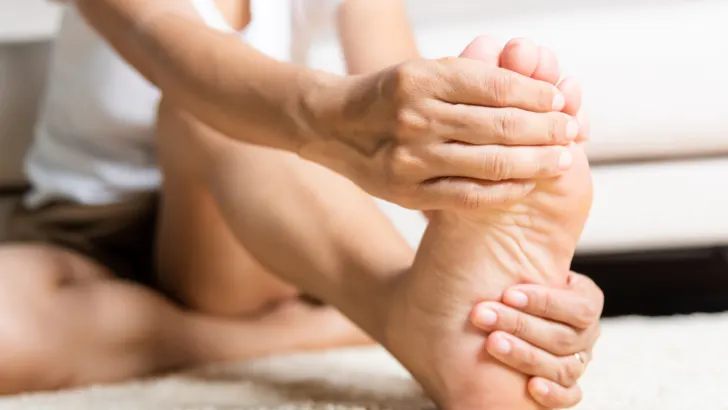
Choose the Right Footwear
The right footwear is crucial when hiking with plantar fasciitis. Look for shoes or boots with good arch support, a cushioned sole, and a wide-toe box. Zero-drop shoes or shoes with a low heel-to-toe drop can also be helpful. Make sure your shoes fit properly and don’t rub or pinch your feet. Consider using orthotic inserts for extra support.

Start Slowly
If you’re new to hiking or haven’t hiked in a while, start slowly. Begin with shorter, easier hikes and gradually increase the length and difficulty. This will give your feet time to adjust and prevent further injury.

Take Breaks Often
Take frequent breaks during your hike to rest and stretch your feet. Sit down and take off your shoes to give your feet a break. Stretch your calves, hamstrings, and plantar fascia to keep them loose and prevent cramping.

Stretch Regularly
Stretching is essential when hiking with plantar fasciitis. Before your hike, stretch your calves, hamstrings, and plantar fascia to warm them up. After your hike, stretch again to prevent stiffness and promote healing. Incorporating yoga or Pilates into your routine can also be beneficial.

Apply Ice
If you experience pain or inflammation during or after your hike, apply ice to the affected area. Use a cold pack or a bag of ice wrapped in a towel for 15-20 minutes at a time. This will help reduce swelling and relieve pain.
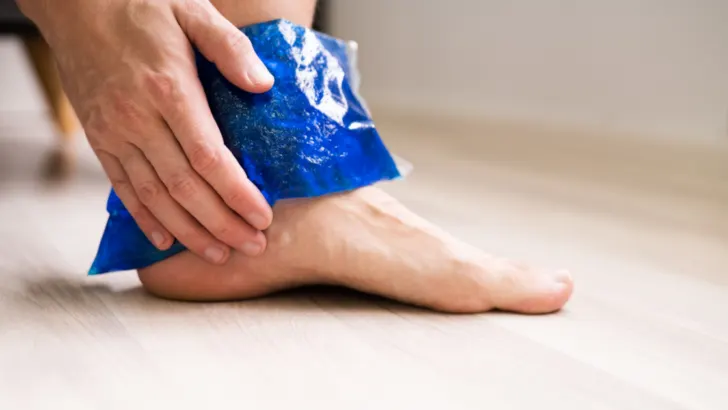
Related Posts:
Tips for Preventing Plantar Fasciitis
As someone who has suffered from plantar fasciitis while hiking, I have learned the importance of taking preventative measures to avoid this painful condition. Here are some tips that have helped me prevent plantar fasciitis:
Warm Up
Before starting a hike, it’s important to warm up your feet and legs. This can be done by doing some simple stretches, such as calf raises or ankle rotations. Taking a few minutes to warm up can help prevent injury and reduce the risk of developing plantar fasciitis.

Stretch Regularly
Stretching is essential for preventing plantar fasciitis. Stretching your calves, hamstrings, and feet can help improve flexibility and reduce the risk of developing this condition. Some effective stretches include toe curls, calf stretches, and foot rolls. It’s important to stretch regularly, both before and after hiking.

Wear Supportive Footwear
Wearing supportive footwear is crucial for preventing plantar fasciitis. When hiking, it’s important to wear shoes that provide adequate arch support and cushioning. Avoid shoes that are too tight or too loose, as this can put unnecessary strain on your feet. It’s also important to replace your shoes regularly, as worn-out shoes can lead to injury.
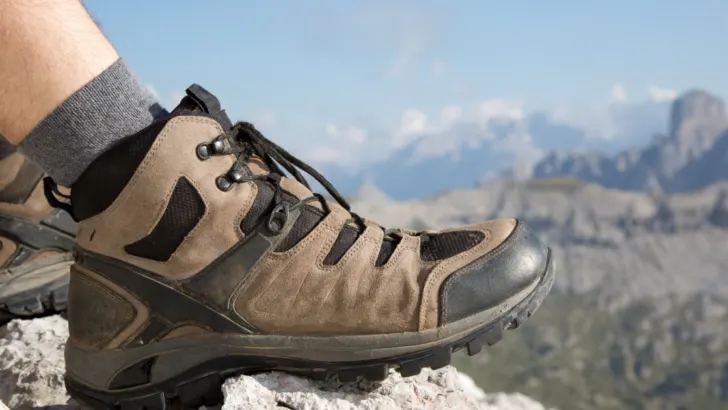
Avoid Excessive Weight Gain
Excessive weight gain can put extra pressure on your feet and increase the risk of developing plantar fasciitis. Maintaining a healthy weight can help reduce the risk of developing this condition. It’s also important to avoid carrying too much weight when hiking, as this can put additional strain on your feet.
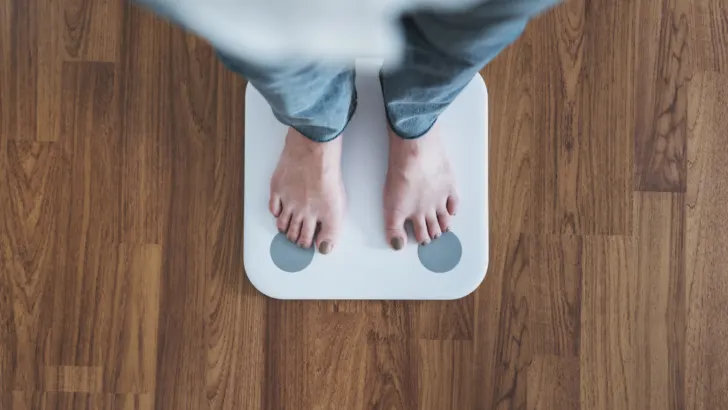
Related Posts:
If You Are Experiencing Pain While Hiking, It Is Important to Stop and Rest
As someone who has experienced plantar fasciitis while hiking, I know how tempting it can be to push through the pain and keep going. However, it is important to listen to your body and take breaks when necessary. Continuing to hike on a painful foot can lead to further damage and prolong the healing process.
When you start to feel pain in your foot, find a place to sit and take a break. Take off your shoes and gently massage the affected area. You can also stretch your calf muscles by placing the ball of your foot on a raised surface and leaning forward.
If the pain persists, it may be necessary to cut your hike short and head back to your car or campsite. Don’t be discouraged if you have to stop early. Remember that your health and well-being are more important than completing a hike.

It’s also important to properly rest and care for your foot after a hike. Ice the affected area, elevate your foot and take over-the-counter pain medication if needed. Don’t hesitate to seek medical attention if the pain persists or worsens.
In summary, if you are experiencing pain while hiking with plantar fasciitis, it is crucial to stop and rest. Pushing through the pain can lead to further damage and prolong your recovery time. Take breaks, stretch, and if necessary, cut your hike short. Remember to properly care for your foot after a hike and seek medical attention if needed.
If the Pain Is Severe or Does Not Improve with Rest, You Should See a Doctor
If you have been experiencing severe pain in your heel or along the bottom of your foot, or if your pain has not improved with rest and self-care, it may be time to see a doctor. Plantar fasciitis can be a stubborn condition that requires medical intervention to fully resolve.
When you visit your doctor, they will likely perform a physical examination of your foot and ask you questions about your symptoms and medical history. They may also order diagnostic tests such as X-rays or an MRI to rule out other possible causes of your pain.

Depending on the severity of your condition, your doctor may recommend a variety of treatment options. These may include:
- Custom orthotics or shoe inserts to provide additional support and cushioning to your feet
- Physical therapy exercises to stretch and strengthen the muscles in your feet and legs
- Nonsteroidal anti-inflammatory drugs (NSAIDs) to reduce pain and inflammation
- Corticosteroid injections provide immediate relief of pain and inflammation
- Extracorporeal shock wave therapy (ESWT) to stimulate the healing of the plantar fascia
It is important to follow your doctor’s instructions closely and to continue with any prescribed treatments even if your pain begins to improve. Plantar fasciitis can be a chronic condition that requires ongoing management to prevent flare-ups and maintain long-term relief.
In some cases, surgery may be necessary to fully resolve plantar fasciitis. However, this is typically only recommended after all other treatment options have been exhausted and the pain is severely impacting your quality of life.

Remember, if you are experiencing severe or persistent pain in your feet, it is always best to seek medical attention to ensure an accurate diagnosis and appropriate treatment plan.
There Are Some Exercises That You Can Do to Help Strengthen Your Plantar Fascia and Prevent Pain
As someone who enjoys hiking, I know how important it is to take care of your feet, especially if you have plantar fasciitis. Fortunately, there are some exercises that you can do to help strengthen your plantar fascia and prevent pain.
One exercise that can be helpful is towel curls. To do this exercise, place a towel on the floor and use your toes to grab and lift the towel. Repeat this exercise for several repetitions on each foot.
Another exercise that can be helpful is toe stretches. Sit down and cross one leg over the other, then grab your toes and gently pull them towards you until you feel a stretch in the arch of your foot. Hold the stretch for a few seconds, then release and repeat on the other foot.
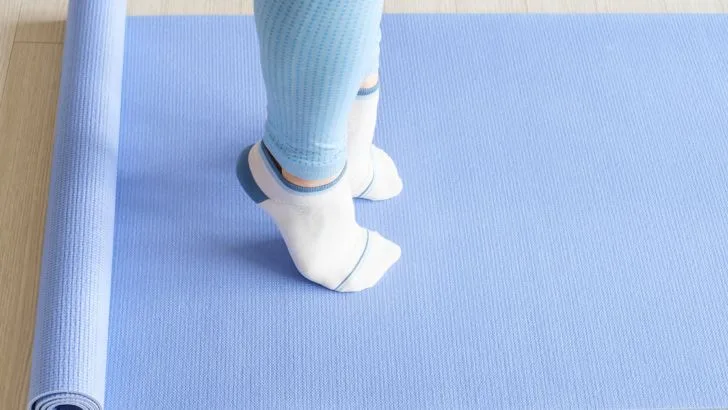
Calf stretches can also be helpful for preventing plantar fasciitis pain. Stand facing a wall and place your hands on the wall. Step back with one foot and keep your heel on the ground. Lean forward until you feel a stretch in your calf muscle, then hold for a few seconds and repeat on the other foot.
It’s important to remember that these exercises should be done regularly in order to see the most benefit. It’s also important to listen to your body and not push yourself too hard, as overdoing it can lead to further injury.
In addition to these exercises, it’s a good idea to wear proper footwear and take breaks when necessary during hikes. By taking care of your feet and doing these exercises regularly, you can help prevent plantar fasciitis pain and continue to enjoy hiking and other activities.
If You Are Prone to Plantar Fasciitis, You May Want to Consider Wearing Compression Socks While Hiking
As someone who is prone to plantar fasciitis, I know how important it is to take preventative measures when it comes to foot pain. One thing that has helped me on hikes is wearing compression socks.
Compression socks work by applying pressure to the foot and ankle, which can help increase blood flow and reduce inflammation. This can be especially helpful for those with plantar fasciitis, as inflammation is a common symptom.
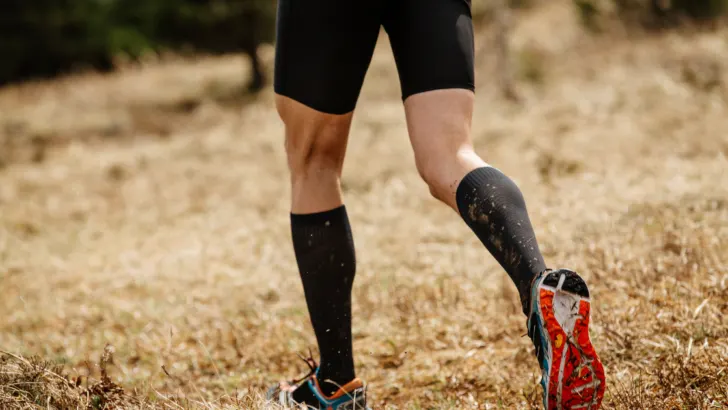
When choosing compression socks, it’s important to find ones that fit properly and provide the right amount of compression. Too much compression can actually make symptoms worse, while too little won’t provide any relief.
Another benefit of compression socks is that they can help prevent blisters by reducing friction between the foot and the shoe. This is especially important on long hikes where blisters can become a painful problem.
While compression socks may not be a cure for plantar fasciitis, they can be a helpful tool in managing symptoms while hiking. As always, it’s important to consult with a healthcare provider before trying any new treatments.
Conclusion
In conclusion, hiking with plantar fasciitis can be challenging, but it is not impossible. Throughout my research and personal experience, I have found that the following tips and tricks can help alleviate pain and make the hiking experience more enjoyable:
- Proper footwear is crucial. Look for shoes with good arch support, cushioning, and a wide-toe box. Insoles designed for plantar fasciitis can also provide additional support.
- Stretching and strengthening exercises for the feet and calves can help prevent and alleviate pain. Incorporate these exercises into your daily routine, especially before and after hiking.
- Gradually increase the intensity and duration of your hikes to avoid overexertion. Listen to your body and take breaks when necessary.
- Use hot and cold treatments to reduce inflammation and pain. Ice packs and heating pads can be used alternately to provide relief.
- Lighten your backpack and carry only the essentials. The less weight you carry, the less strain on your feet and ankles.
- Stay hydrated and maintain a healthy diet to promote overall foot health.

Remember, everyone’s experience with plantar fasciitis is different, and what works for one person may not work for another. It is essential to listen to your body and seek medical advice if necessary. With proper preparation and equipment, hiking with plantar fasciitis can still be an enjoyable and fulfilling experience.
- American Hiking Society: https://americanhiking.org/
- Verywell Fit: https://www.verywellfit.com/
- REI Co-op: https://www.rei.com/
Frequently Asked Questions
What are the best hiking boots for people with plantar fasciitis?
When it comes to choosing hiking boots for people with plantar fasciitis, it’s important to look for boots that provide good arch support and cushioning. Some of the best hiking boots for plantar fasciitis include those with removable insoles, which can be replaced with custom orthotics for added support. It’s also important to choose boots that fit well and provide ample room for your toes.
Are there any waterproof hiking boots that are recommended for plantar fasciitis?
Yes, there are waterproof hiking boots that are recommended for people with plantar fasciitis. Look for boots that provide good arch support and cushioning, as well as a waterproof and breathable membrane, to keep your feet dry and comfortable. Some of the best waterproof hiking boots for plantar fasciitis include those from brands like Salomon, Merrell, and KEEN.
What exercises can help alleviate plantar fasciitis pain before a hiking trip?
Stretching exercises can help alleviate plantar fasciitis pain before a hiking trip. Some effective stretches include calf stretches, toe stretches, and plantar fascia stretches. It’s also important to strengthen the muscles in your feet and legs, as weak muscles can contribute to plantar fasciitis pain. Consult with a physical therapist or podiatrist for a personalized exercise plan.
Are there any podiatrist-recommended hiking shoes for people with plantar fasciitis?
Yes, there are podiatrist-recommended hiking shoes for people with plantar fasciitis. Look for shoes that provide good arch support and cushioning, as well as a wide toe box for ample room for your toes. Some recommended hiking shoes for plantar fasciitis include those from brands like Oboz, HOKA ONE ONE, and Altra.
Is hiking a good activity for people with plantar fasciitis?
Hiking can be a good activity for people with plantar fasciitis, as long as you take the necessary precautions and wear appropriate footwear. It’s important to start slowly and gradually increase the intensity and duration of your hikes. It’s also important to stretch and strengthen your feet and legs, and to take breaks when needed.
Can walking barefoot worsen plantar fasciitis symptoms?
Walking barefoot can worsen plantar fasciitis symptoms, as it puts additional strain on the plantar fascia. It’s important to wear supportive footwear at all times, including around the house and during exercise. If you prefer the feeling of being barefoot, consider wearing minimalist shoes with thin, flexible soles.
